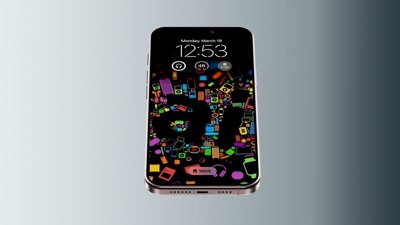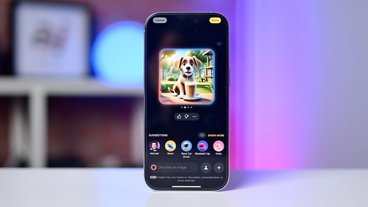Apple is developing technology that would allow any number of willing people in close proximity to start an audio chat, using only an iPhone and a headset like AirPods, with no WiFi or cell service needed.
Instantaneous communication like the Walkie-Talkie feature on the Apple Watch would be possible but with groups of people instead of individuals.
Unlike the Walkie-Talkie feature, this new technology would eliminate the roundtrip to Apple's cloud servers, a step that makes Walkie-Talkie unreliable at times. Also, unlike Walkie-Talkie, this would allow groups of willing people to talk to each other simultaneously.
In a newly published patent application Apple details a system for person-to-person communications directly between devices that would communicate directly rather than using the internet to transmit messages.
This technology would usher in a new communication experience, allowing users to select one or more people to talk to with seamless functionality, using only the iPhone in their pocket.
In practice, this would function much like AirDrop, but for conversations. With AirDrop, iPhone users can connect to another user and share files without needing to connect to a network or use the cloud for transmission. This proposed technology would allow one-to-many connections, where all group members can talk to each other at the same time.
For example, a group of people at a crowded festival could communicate with each other to discuss where they are going to meet up. The iPhone would display how close people are based on the same technology that shows the direction and distance to your AirTag.
Apple's Ultra Wide Band (UWB) technology already allows the iPhone and Apple Watch to detect the location of a person or object. UWB works a bit like echolocation, sending out radio waves and measuring the return signals.
The UWB chip is what gives iOS and watchOS the ability to get compass like directions to devices like the AirTag and get a live update of the distance.
This could also be used to meet new people. Those same festival goers could chat with other willing attendees, sharing tips or providing guidance on the best things to do. The distance and direction to other people could help groups meet up.
Another powerful use would be in emergency response situations. Teams could coordinate without needing the same physical walkie-talkie system and frequencies.
Cell phone networks are often overloaded or not functional in an emergency. Apple's technology would allow coordination even if cell connections are down.
The patent shows an interface where nearby people are displayed in a proximity circle. People inside the main circle are closest, and people farther away are shown in a larger circle.
The rings of the circle indicate the distance that this ad-hoc network between people would work.
Like AirDrop, the new technology would allow people to add members to the chat even if they're not in a user's contact list. People known to the user would display their names, while unknown people would also appear on the interface based solely on distance.
Simply tapping on a name would add someone to the conversation, and users could tap as many nearby people as they'd like. People could be added to a conversation as they came into range.
Presumably, unknown people could share a contact card and photo, like when you start a Message conversation with a group.
The patent application specifically shows an iPhone and a headset as the central technology for this to work. Still, it's not difficult to imagine using headsets like the Apple Vision Pro for these point-to-point communications.
As these systems get smaller, perhaps to the size of the much-rumored Apple glasses, having the ability to chat with people in your area directly would become even easier.
The patent application is credited to Esge B. Andersen and Cedrik Bacon. Andersen filed the original patent in 2022 with the same name.
 David Schloss
David Schloss














 Charles Martin
Charles Martin




 Malcolm Owen
Malcolm Owen
 Andrew O'Hara
Andrew O'Hara








19 Comments
Perhaps more precisely: 'Apple is trying to reinvent group audio chat with no cell or WiFi network needed'.
I would be willing to bet a dollar to a donut that the devices would link directly using the iPhones' WiFi radios.
I have been hoping for years that walkie-talkie would be exported to AirPods.
My vision was that one could create ad hoc voice groups in small geographies that allowed regular people to have the same sort of always on communications as you see for security teams (like in the movies, but in less exciting situations). My use case was for situations like crowds or walking with a group down a city street where, with noise cancellation, you could have a conversation without yelling or needing to stand right next to someone.
And, in some future vision, if AI got good enough, it might be able to guess whom you were speaking with (maybe the start of the conversation is with all but then narrows to a pair when obvious whom the participants are). And dynamically adjust volume so others can sort of hear but assume they don't really need to pay attention until context makes it clear that something was meant for everyone.
So….FireChat?